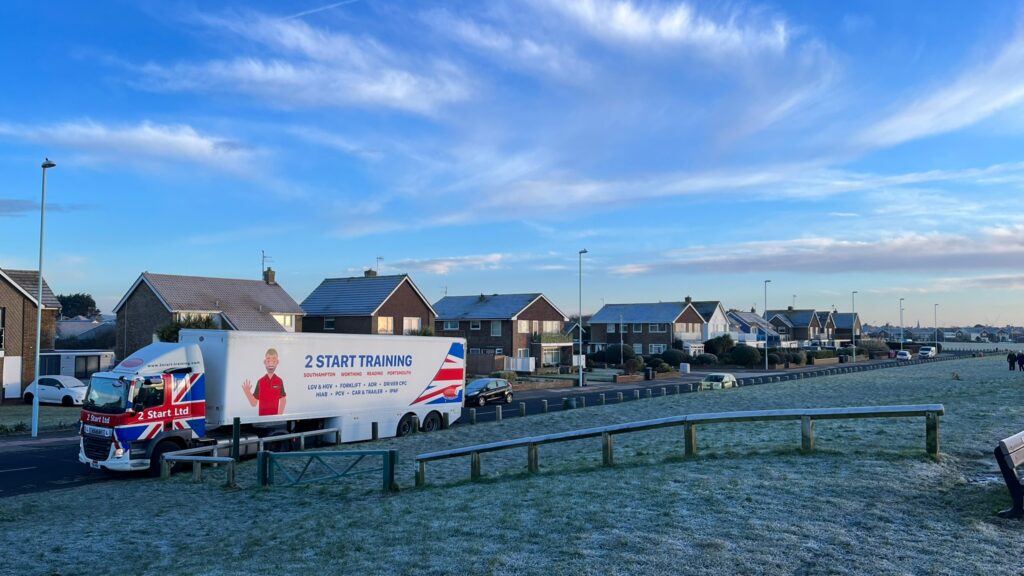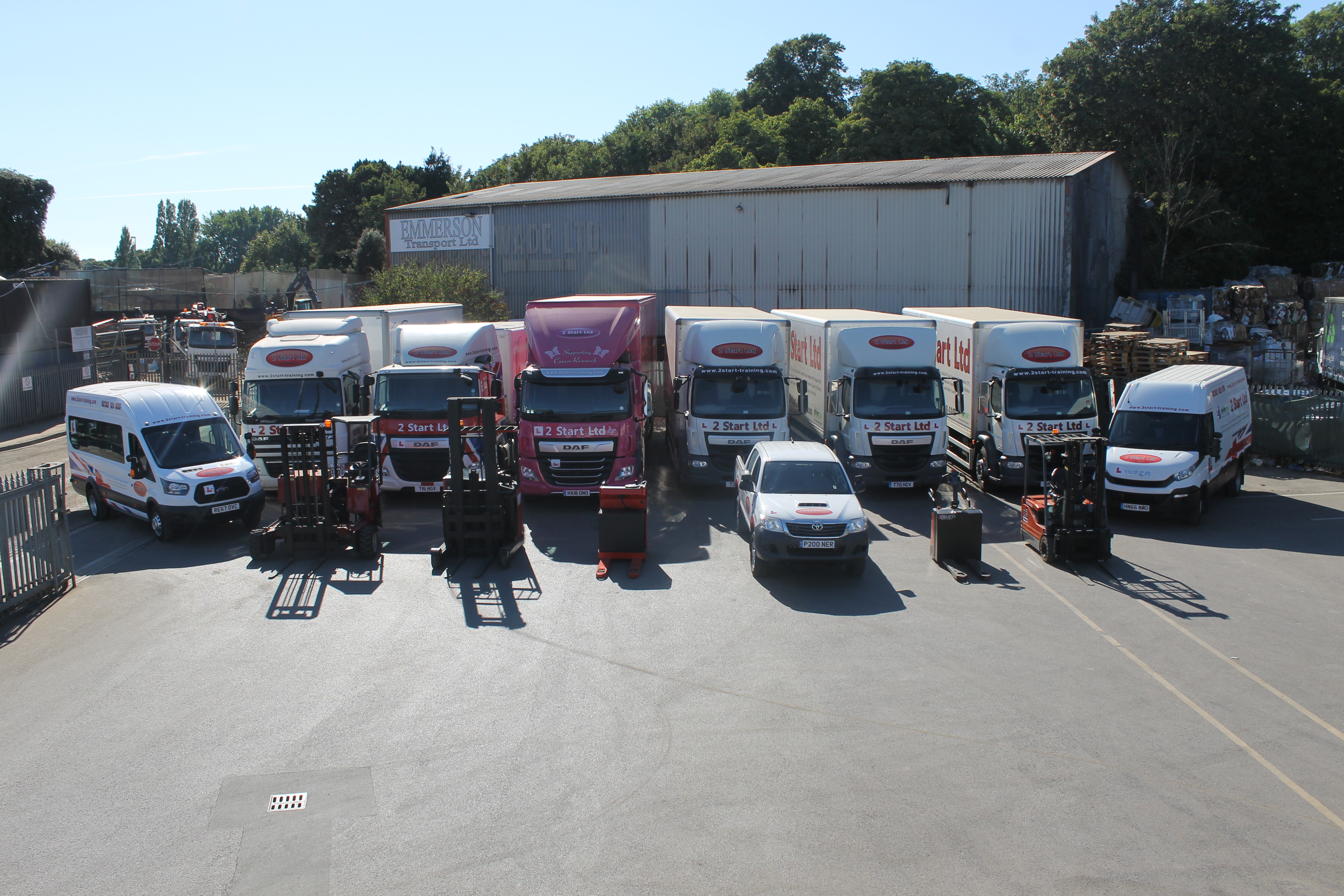During the colder months of the year, conditions can often be treacherous across the UK road network. From snow to rain, poor conditions can make driving your HGV incredibly difficult. Visibility will be poor, and road conditions can mean you will have less grip, and icy road conditions can lead to skidding. Strong winds can also impact driving in high-sided vehicles. To keep you safe this winter, 2 Start has devised this simple guide to help you stay safe in your HGV and ensure safe HGV driving and the safety of other road users this winter.
Planning Ahead
Checking the weather forecast ahead of time can ensure you are fully prepared with the conditions you may potentially face on the road. Planning your journey and identifying potential hazards with your transport manager mean you are able to assess how safe your journey is and what precautions you may need to consider when driving your HGV. You will be able to inform your customers of any potential delays you may face as you may need extra time to complete your journey due to road conditions. The Met Office can provide the most up-to-date weather for your area.
Check Your Vehicle
Checking your vehicle is so important in bad weather conditions to keep you and other road users safe, see our tips for checking your HGV is safe to go.
- Wiper Blades – Ensure these are working correctly and they are adequately clearing the windscreen. If they are not, then change them before setting out.
- Vehicle and trailer body: Remove all snow using a long-handled snow brush from the cab and trailer body and ensure the registration plates are visible.
- Windscreen – Ensure the windscreen is completely free of ice or snow.
- Lights – Make sure all of your lights are working and are in good order. Clear any snow from the whole of the light before setting off.
- Fluid Levels – Check that all of the vehicle’s fluids are topped up, for example, anti-freeze, oil, and water.
- Brakes – Check that the brake lines are not frozen and if defrosted have not split. Also, test your brakes and make sure they’re working properly.
- Tyres. Worn tyres reduce starting traction by 30-50% make sure that you have the minimum legal limit for HGV of 1mm. Ideally, you would not want your tyres to get below 3mm.

Safety Equipment
It’s good to plan for all eventualities including, getting stranded on unsafe roads or breaking down in poor conditions. We have compiled a list of handy items to help you stay safe.
- De-icer and scraper – You may find conditions worsen whilst out on the road or after you have stopped for a break. You must ensure that your front and rear windscreens are clear before setting off.
- Torch – Make sure you have a good quality torch and spare batteries, don’t rely on your phone torch. Consider carrying a spare torch also.
- Shovel and salt – Some minor roads may not have been treated, therefore to ensure your safety you may need clear the road ahead of you.
- Road map – This may come in handy should your sat-nav stop working.
- Non-perishable food and drink – A few bottles of water and some breakfast bars or protein bars should do the trick whilst you are stranded.
- Mobile phone charger and charge pack – Keeping a phone charger in your vehicle will ensure you are able to use your phone in an emergency. You may consider a portable charge pack if you are not able to use the power from your vehicle.
- High-visibility jacket or vest – If you need to get out of your vehicle on the road, ensure other road users can see you.
- Warm winter clothes – Thermals, gloves, scarves, hats, and blankets, can keep you warm should you need to stop in your vehicle without heating. Make sure that you are dressed for the conditions before setting out on your journey.
- Raincoat – In case it rains, you don’t want to get wet!
- First aid kit – You may need this if you have an accident whilst on the road. This may also come in handy if you are first at the scene of another accident.
Safe Driving Tips
Whilst you may have all the equipment and have thoroughly checked your vehicle, it is equally as important to drive safely on the roads. There is no particular way to train for harsh conditions, it will come with experience. We have provided some handy tips below to ensure you are driving safely in poor weather.
When driving in snow and ice, slow down. Reduce your speed and keep a good amount of distance between you and the vehicle in front of you. Snow and ice can increase stopping distances as much as 10 times compared with normal conditions. Driving smoothly with no harsh braking or accelerating can ensure that the vehicle is stable and there is no loss of control.
Black Ice, is often invisible and drivers can get caught out when driving over it. Keep alert and if you spot any patches take care to avoid them on the road.
When driving a high-sided HGV in windy conditions you should take care when driving over bridges or viaducts. Gusts of wind can unbalance your vehicle, so reduce your speed and take it easy. When your HGV trailer is empty or you are carrying a lighter load be sure to take extra care also. Check your journey and see if you can avoid those routes.
Safety is Key!
We hope this guide will come in useful to you for safe HGV driving in the winter. Safety is paramount not only for you the driver but for the other users on the roads. Remember slow down and keep your distance to avoid accidents. Ensure you have full visibility in your vehicle and remember to keep your bad weather kit in your cab. If you do not feel safe when you are out driving in these types of conditions pull over and make your transport manager aware.










